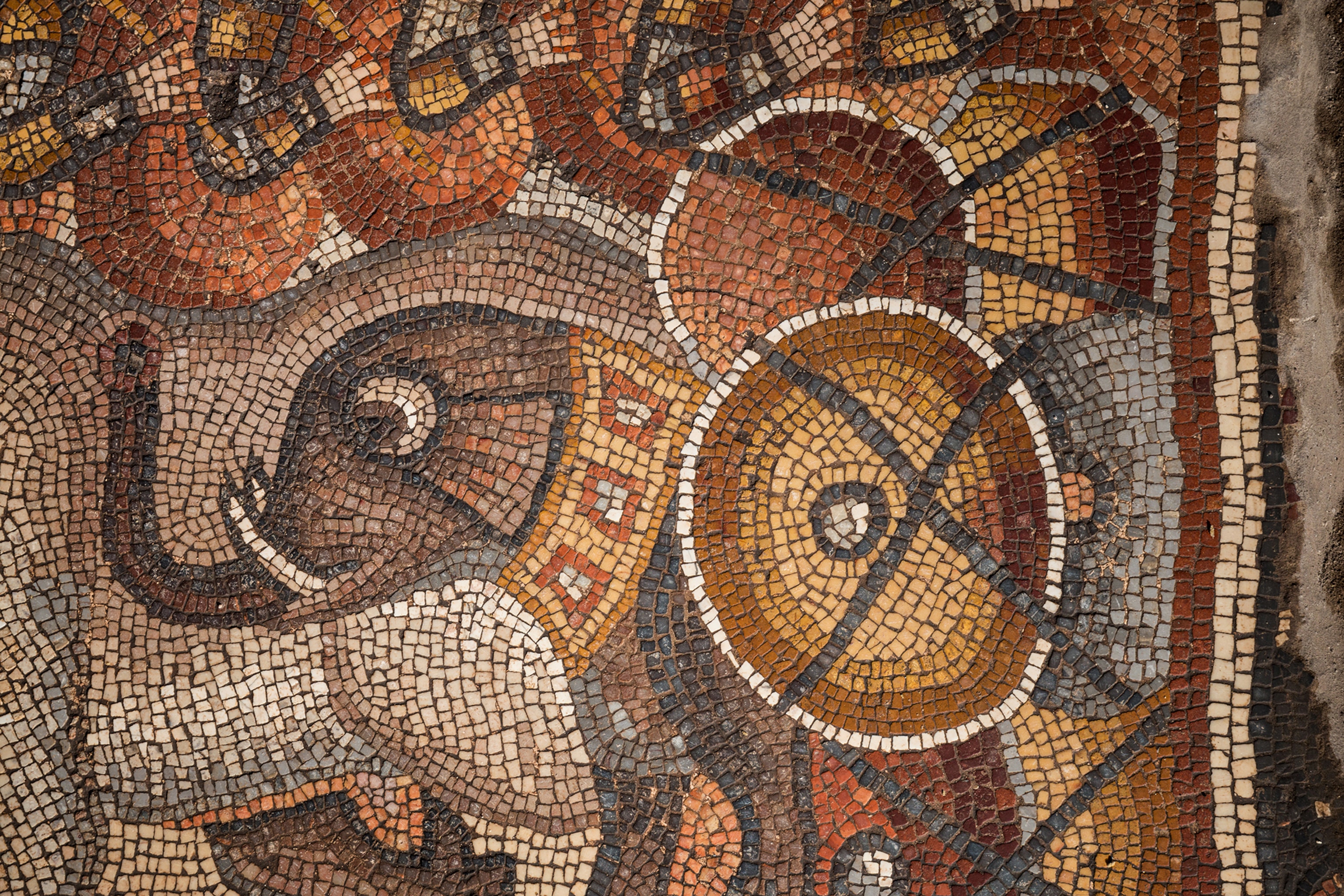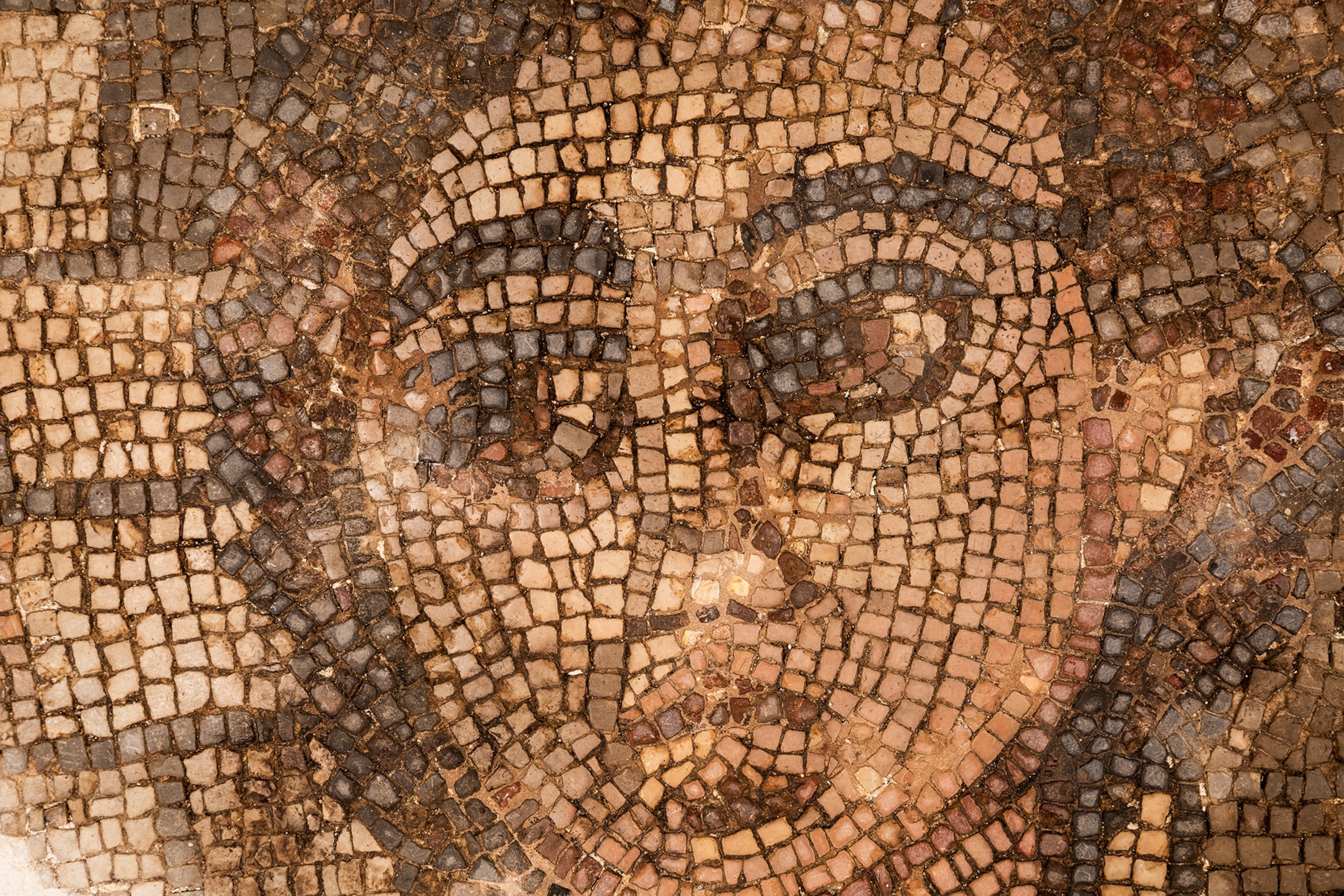
Surprising Mosaics Revealed in Ancient Synagogue in Israel
Archaeologists puzzle over depictions of dancers, elephants, and a mysterious figure that may be Alexander the Great.
HUQOQ, Israel — At the end of last month, amid the murmured chatter of archaeologists and the scraping of picks and trowels on rocks, a shout suddenly rang out. "Get Jodi! More mosaics!"
The diggers were calling for Jodi Magness, the director of excavations at the ancient Jewish village of Huqoq in Israel.
Working on a hill high above the Sea of Galilee, the team has uncovered one amazing floor mosaic after another in the buried ruins of a synagogue.
Since the first patch of tiny, naturally colored stones came to light in 2012, Magness, a professor at the University of North Carolina, Chapel Hill, and assistant director Shua Kisilevitz, an archaeologist with the Israel Antiquities Authority, have returned to the site every June to explore what lies beneath the layers of dirt and rubble that have accumulated through the centuries.
Synagogues of this particular type typically don't have mosaic floors.Jodi Magness, Director of excavations at the ancient Jewish village of Huqoq in Israel
"The mosaics were a complete surprise," says Magness, whose research is supported in part by a National Geographic Society grant. "Synagogues of this particular type—which is best represented by the synagogue at Capernaum just a couple of miles away—typically don't have mosaic floors. They have flagstone pavements."
Based on artifacts such as potsherds and coins from the synagogue’s foundations at Huqoq, Magness now believes the building dates to the fifth century—a time when Rome ruled this part of the world, and after Christianity had become the official religion of the Roman Empire.
At the start of this year's fieldwork, the team of experts and student volunteers revealed the rest of a large, rectangular mosaic that had been partly uncovered in 2013 and 2014. They have now confirmed that it spans the eastern aisle of the synagogue, which is more than 11 feet wide.

Framed by an undulating ribbon, the mosaic is composed of three horizontal bands (registers) that show soldiers bearing shields and spears, elephants outfitted for war, the aftermath of a battle, and robed men—some framed by the stone arches of a building.
The presence of elephants indicates that we have for the first time a non-Biblical story depicted in an ancient synagogue.
"The presence of elephants indicates that we have for the first time a non-Biblical story depicted in an ancient synagogue," says Magness.
Depiction of Alexander the Great?
The top band, which is the largest, includes two central male figures, one in a white robe with an insignia of high status and the other wearing battle gear, a cloak of royal purple, and the diadem of a ruler.
"Specialists are studying this and will come up with different interpretations and possibilities," says Magness. "My personal opinion is that what we have is a depiction of the legendary meeting between Alexander the Great and the Jewish high priest of Jerusalem. It’s a legend that developed and circulated among the Jews in the centuries after Alexander’s death and is preserved in a number of ancient sources."
Just beside that grand mosaic, also in the eastern aisle, the team uncovered more of the very first scene that came to light here. First-time volunteer Bryan Bozung made that initial stunning discovery during the 2012 field season as his trowel scraped the last layer of dirt from the image of a human face. It was the face of a woman wearing an earring, it turns out, and it flanked six lines of white Hebrew letters set in a black oval.
Although the inscription is fragmentary, Israeli archaeologist David Amit offered this translation shortly before he passed away in 2013:
And blessed
[are the people of the town?] who
adhere to all
the commandments. So may be
your labor and Ame[n Se]la[h]
[P]eace
Exactly what the inscription was meant to convey, and who the woman is, are two of the site's many mysteries.

This year the team uncovered more of the panel—motifs that include plump cupids, colorful birds, long floral garlands, and dancing male figures likely associated with Dionysus, the Greco-Roman god of wine, revelry, and the theater. A medallion enclosing a theater mask marks each corner.
Why such images from the Classical world would appear in a synagogue is another puzzle, but as excavations continue, the team may find mosaics that offer context and suggest possible explanations.
For now, the mosaics are in a safe place for conservation, and the excavated areas have been backfilled. All that's left to see in this ancient agricultural area is a hillside dotted with old, twisted olive trees, horses and cows grazing on the sun-parched grass nearby, and a million-dollar panorama of the sparkling Sea of Galilee far below.
Follow A.R. Williams on Twitter.





